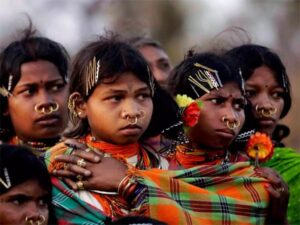PRELIMS BITS
Context:
The Rajgond tribe, a dominant group within the Gond community, recently made headlines.
About the Gond Tribe
- Ethno-linguistic Identity: The Gonds are a tribal group belonging to the Dravidian ethno-linguistic category.
- Geographical Spread: They are primarily found in Madhya Pradesh, Chhattisgarh, Maharashtra, and Odisha, with smaller populations in states like Gujarat, Telangana, Uttar Pradesh, and Karnataka.
- Main Subgroups: The Gond community is divided into four major subgroups—Raj Gonds, Madia Gonds, Dhurve Gonds, and Khatulwar Gonds.
- Language: Their native tongue is Gondi, an unwritten Dravidian language.
- Livelihood: They engage in agriculture, animal husbandry, and gathering forest resources.
- Religious Beliefs: Their spiritual practices include worshipping clan and village deities, along with reverence for ancestors.
- Festivals: Traditional celebrations include Keslapur Jathra and Madai, along with Dussehra.
Historical Background
- Early Settlement: The Gond people established their settlements in the Gondwana region between the 9th and 13th centuries AD.
- Political Influence: By the 14th century, they had formed kingdoms and constructed forts, palaces, and temples.
- Major Dynasties: The four significant Gond ruling dynasties were Garha-Mandla, Deogarh, Chanda, and Kherla, which governed central India.
- Resistance Against the British: They actively resisted British rule and held influence over Malwa following the decline of the Mughal and Maratha empires in 1690.





